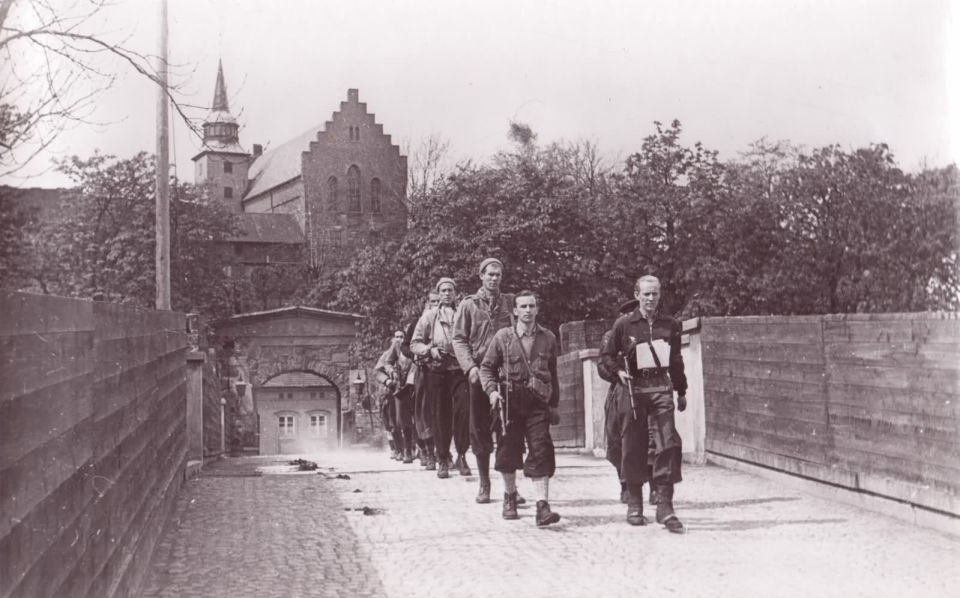On 18 December, a Royal Canadian Air Force aircraft crash-landed near a military airfield near Oslo. Only two of the 17 passengers survived. Among those killed was Hjalmar Steenstrup, a Norwegian representative at the Nuremberg Trials. He was set to appear before the tribunal six weeks later to testify about Germany’s occupation of Norway.
Norway was conquered in less than a month. German troops landed in northern Scandinavia on the night of 8-9 April 1940, under the pretext of combatting British and French aggression. On 2 May, the national army surrendered, and the government with King Haakon VII of Norway fled to England. Few were happy with the invaders, but not all dared to join the resistance. Hjalmar Steenstrup was among those who did.
Steenstrup was born on 11 October, 1890 into the family of a Protestant priest. He worked in insurance and was an active political observer and journalist. He mainly reported on wildfires. Eventually, Steenstrup founded a national wildfire association in a bid to preserve nature and became its executive director. Even in pre-war Norway, many people had heard of “Director Steenstrup” so when the Nazis occupied Norway, Steenstrup's reputation as a conservationist enabled him to play an important role in the Resistance.
He used his official position to travel frequently between Oslo and Stockholm, where the diplomatic mission of the Norwegian government-in-exile was located. This provided the Norwegian resistance with a reliable channel of communication from the autumn of 1940. He also facilitated the escape of Norwegian refugees to England through neutral Sweden. Steenstrup operated under the undercover name “Cato.”
One day he was asked by British intelligence services to find reliable people with a military background in the Norwegian resistance. In May 1941, Steenstrup was directly involved in the formation of “Milorg,” an organisation that operated at a “professional” level. Milorg's work included intelligence, sabotage, and other dangerous operations against the Nazis. Steenstrup also became a member of the organisation.
In July 1941, Cato’s identity was exposed and he was arrested by the Nazis. After being imprisoned, Steenstrup was sent to the Grini concentration camp in Bærum, and in September 1943, transferred to Sachsenhausen in Germany. Just as he had travelled between Oslo and Stockholm on secret missions for the underground, he shuttled between prisoners in the German concentration camp as camp postmaster – as certain categories of prisoners were allowed to correspond. Steenstrup collected information about people's fates and Nazi crimes. When the camp was liberated in April 1945, Steenstrup returned to Norway and began cooperating with the Ministry of Social Affairs – he facilitated the repatriation of Norwegians and collected and processed data on the crimes of the Nazi occupiers in Norway.
In the view of the government commission, deciding whom to delegate to Nuremberg, Steenstrup was Norway’s best representative and the perfect witness. He was well respected in society, oppressed by the Nazis, participated in the Resistance movement, and was well informed about the charges to be discussed by the Tribunal. He came to Nuremberg and worked with British prosecutors.
After the tribunal announced that the court would adjourn for the holidays from 21 December-1 January, Steenstrup, like many other tribunal officials, decided to go home to join his family for Christmas. He made his way from Nuremberg to Copenhagen, where he was supposed to take a regular flight to Oslo. But the flight was cancelled due to poor weather conditions in the skies above Oslo. He was then offered a flight on the Royal Canadian Air Force's Douglas C-47 Dakota, a military transport aircraft. The aircraft was en route to Oslo from England with a stopover in Copenhagen. Steenstrup accepted the offer and became the 13th passenger and the second Norwegian on board. The first was a young naval officer, Inge Johansen – he returning home after training at a British naval college.
At the time the aircraft reached Oslo, the freezing rain caused both engines to fail. At 11:04 a.m. on 18 December, the plane crashed into a hill near the airfield. Among the 15 dead was “Director Steenstrup.”
By Ekaterina Chernetskaya
























